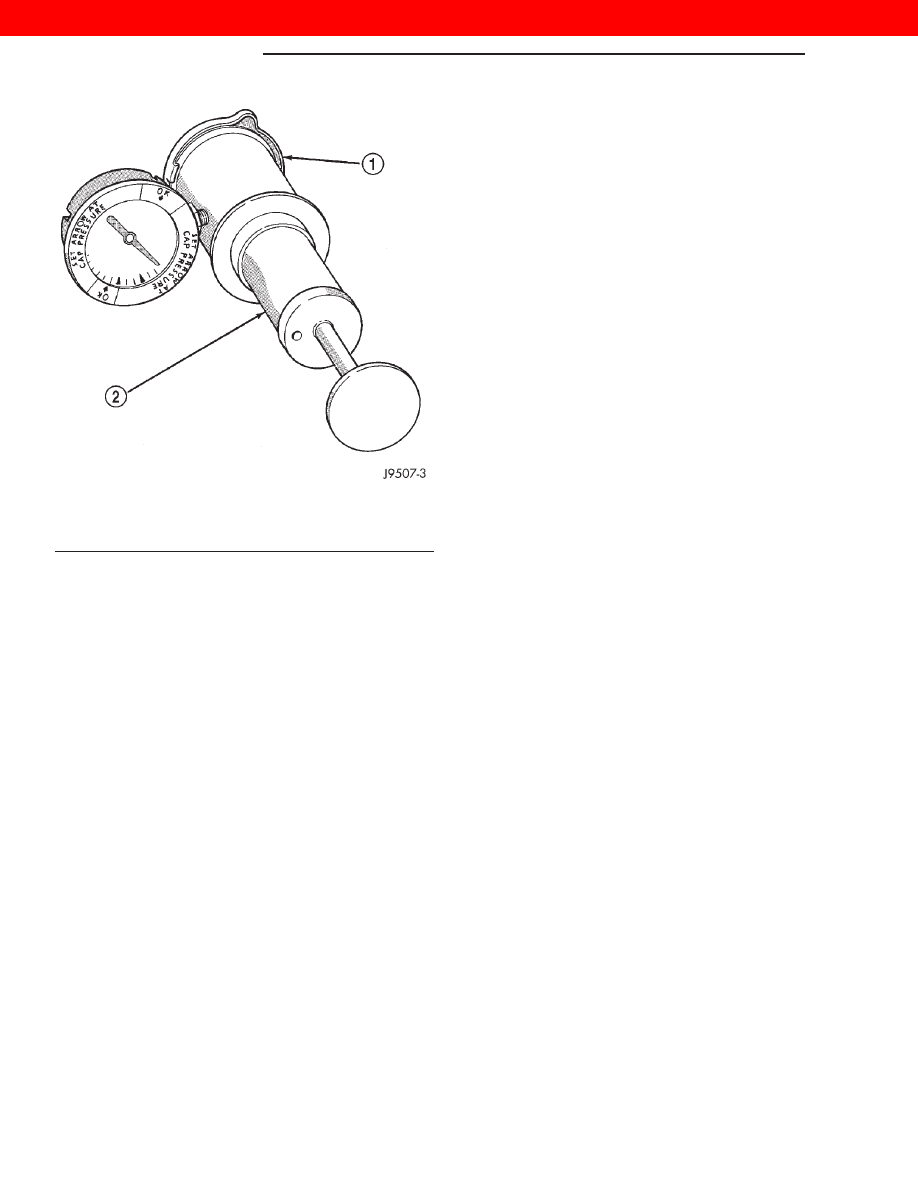Jeep XJ. Manual - part 77

• Holds Steady: If the pointer remains steady for
two minutes, there are no serious coolant leaks in
the system. However, there could be an internal leak
that does not appear with normal system test pres-
sure. Inspect for interior leakage or do the Internal
Leakage Test. Do this if it is certain that coolant is
being lost and no leaks can be detected.
• Drops Slowly: Shows a small leak or seepage is
occurring. Examine all connections for seepage or
slight leakage with a flashlight. Inspect the radiator,
hoses, gasket edges and heater. Seal any small leak
holes with a Sealer Lubricant or equivalent. Repair
leak holes and reinspect the system with pressure
applied.
• Drops Quickly: Shows that a serious leakage is
occurring. Examine the system for serious external
leakage. If no leaks are visible, inspect for internal
leakage. Large radiator leak holes should be repaired
by a reputable radiator repair shop.
INTERNAL LEAKAGE INSPECTION
Remove the oil pan drain-plug and drain a small
amount of engine oil. Coolant, being heavier will
drain first, or operate engine to churn oil, then exam-
ine dipstick for water globules. Operate the engine
without the pressure/vent cap on the coolant tank
until thermostat opens.
Attach a radiator pressure tester to the tank filler
neck. If pressure builds up quickly, a leak exists as
result of a faulty cylinder head gasket or crack in the
engine. Repair as necessary.
WARNING: DO
NOT
ALLOW
PRESSURE
TO
EXCEED 117 KPA (17 PSI). TURN THE ENGINE OFF.
TO RELEASE THE PRESSURE, ROCK THE TESTER
FROM SIDE TO SIDE. WHEN REMOVING THE
TESTER, DO NOT TURN THE TESTER MORE THAN
1/2 TURN IF THE SYSTEM IS UNDER PRESSURE.
If there is no immediate pressure increase, pump
the pressure tester until the indicated pressure is
within the system range. Vibration of the gauge
pointer indicates compression or combustion leakage
into the cooling system.
PRESSURE/VENT CAP
PRESSURE TESTING
Remove the cap from the coolant tank. Be sure
that sealing surfaces are clean. Moisten rubber gas-
ket with water.
A two-piece, threaded adapter set (Fig. 11) must be
used to adapt a standard pressure-type tester (Fig.
12) when testing either the coolant tank or pressure
cap.
Use
Kent-Moore
t
adapter
set
number
J-24460-92 or Snap-On
t numbers TA-32 and TA-33.
Attach the adapter to the cap. Adapter must first be
threaded to cap. Attach pressure tester to adapter.
Operate the tester pump and observe the gauge
pointer at its highest point. The cap release pressure
should be 90-to-117 kPa (13-to-17 psi). The cap is sat-
isfactory when the pressure holds steady. It is also
good if it holds pressure within the 90-to-117 kPa
(13-to-17 psi) range for 30 seconds or more. If the
pointer drops quickly, replace the cap.
CAUTION: Radiator pressure testing tools are very
sensitive to small air leaks, which will not cause
cooling system problems. A pressure cap that does
not have a history of coolant loss should not be
replaced just because it leaks slowly when tested
with this tool. Add water to tool. Turn tool upside
down and recheck pressure/vent cap to confirm
that cap needs replacement.
LOW COOLANT LEVEL- AERATION
CAUTION: Engine damage could occur if the cool-
ant level is allowed to get this low. Always ensure
that the coolant level is not below the full mark. For
better visibility of the coolant level use a shop lamp
to light the pressurized coolant tank and look
through the pressurized coolant tank.
Fig. 12 Typical Cooling System Pressure Tester
1 – PRESSURE CAP
2 – TYPICAL COOLING SYSTEM PRESSURE TESTER
7 - 16
COOLING SYSTEM
XJ
DIAGNOSIS AND TESTING (Continued)
2000 JEEP CHEROKEE